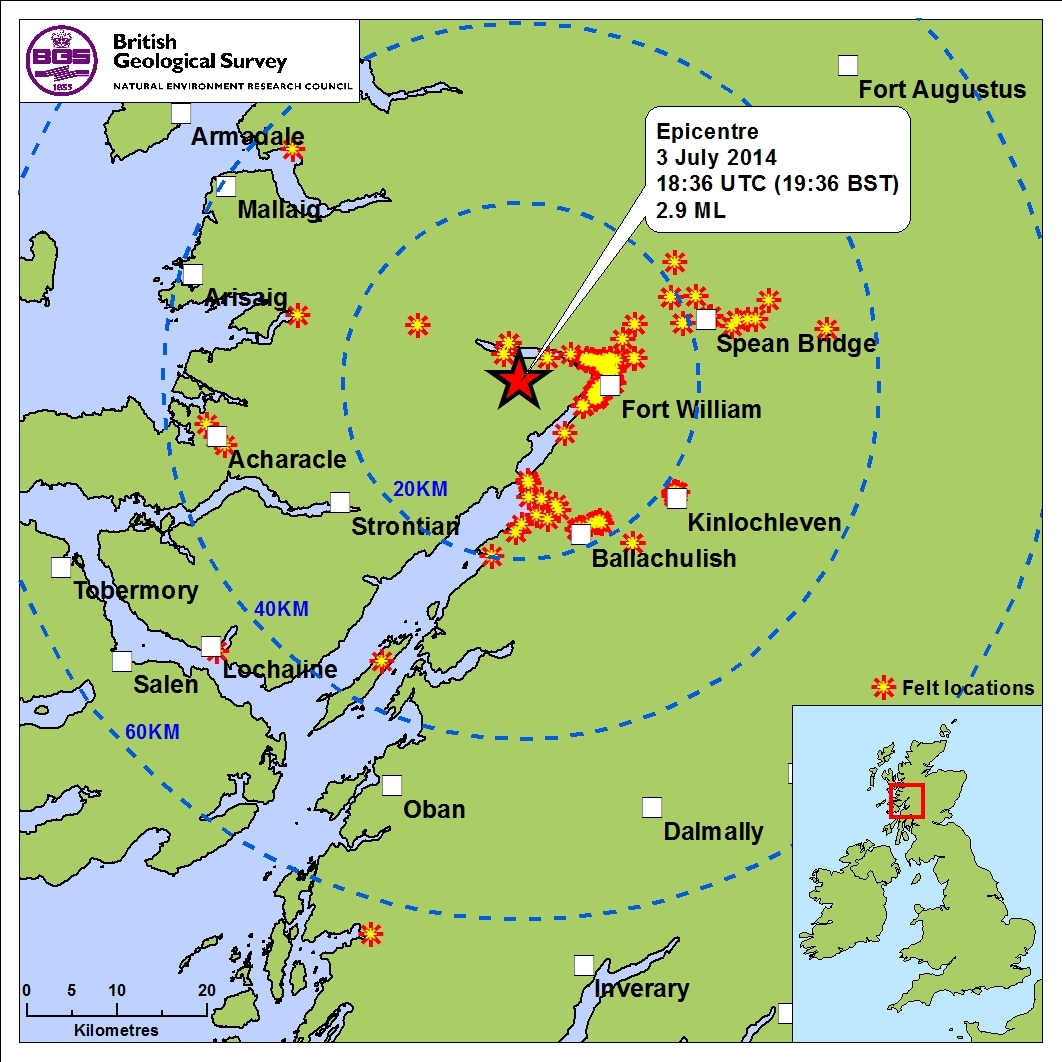The strength of the latest earthquake to hit the Highlands has been rated as “somewhere between a large quarry blast and a small atomic bomb”.
Buildings shook, windows rattled and shocked residents rushed out into the streets to see what was happening.
Some thought there had been an explosion, while others said it sounded and felt as though a lorry had driven into their wall.
But it is not believed any damage was caused by the event.
The magnitude 2.9 quake occurred in the Fort William area of Lochaber at 7.36pm yesterday, but it was felt by people living south of Oban, in Argyll, almost 40 miles away.
The epicentre of the quake was around six miles from the Lochaber town, on the Ardgour peninsula – less than two miles from the epicentre of a magnitude 3.0 earthquake, which occurred on December 10, 2005.
More than 250 people reported the latest quake to the British Geological Survey (BGS) using an online questionnaire.
BGS seismologist Davie Galloway said: “When an earthquake occurs, some of the energy gets turned into kinetic or sound energy.
“This quake was 5.6km (3.5 miles) under the ground, but some of the energy will have reached the surface and turned into sound energy, which is why people hear earthquakes as well as feeling them.”
Most of the reports came from within 12 miles of the epicentre, particularly from the more densely populated areas of Fort William, Spean Bridge, Kinlochleven and Ballachullish and from the hamlets on the eastern shore of Loch Lihnne.
It was also felt in the Loch Nevis area, Acharacle, Lochaline and the Isle of Lismore.
Mr Galloway said there were several fault lines in the area, including the Great Glen Fault and the Highland Boundary Fault, which stretches from Arran diagonally across the country to the Moray Firth, but he said it was not possible to identify which fault line was responsible for this incident.
Lochaber Geopark project manager, Anita Delaney, explained that 2.9 on the Richter scale was described as “somewhere between a large quarry blast and a small atomic bomb” on the Moment magnitude scale.
She said: “The pattern of earthquake activity in Lochaber may be influenced by the distribution of ice during the last glaciation
“The hills were depressed by their burden of ice and, when the ice eventually started to melt, the hills began to ‘bounce back up’. This is known as isostatic rebound. This process still happens to this day.”
